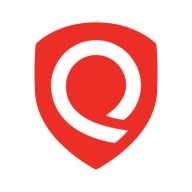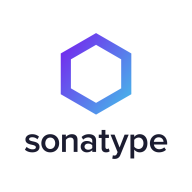

Sonatype Lifecycle and Qualys CyberSecurity Asset Management both compete in the security domain, with Lifecycle excelling in software development security and Qualys in asset management and risk assessment. Lifecycle appears to have an edge with developers due to its detailed code analysis, whereas Qualys stands out in comprehensive asset visibility and risk mitigation.
Features: Sonatype Lifecycle offers robust code analysis and integration with various IDEs and tools such as Jenkins and Azure DevOps, providing precise insights into code vulnerabilities and security. It supports security professionals with the ability to automate open-source governance and minimize risk by recommending secure library alternatives. Qualys CyberSecurity Asset Management delivers detailed asset visibility, end-of-life details, and dynamic tagging capabilities, enhancing detailed asset management. It manages both hardware and software assets effectively and offers comprehensive external attack surface management, improving risk prevention.
Room for Improvement: Sonatype Lifecycle can be difficult to configure and consume significant memory, especially with JavaScript and TypeScript scans. Users have noted inconsistencies in IDE plugins and a need for better security integrations. Qualys CyberSecurity Asset Management needs improvements in its user interface for easier navigation and more efficient scan configurations, alongside additional integrations with non-Qualys ecosystems. Users have also reported high CPU consumption by its agent and desire more flexible scan scheduling.
Ease of Deployment and Customer Service: Sonatype Lifecycle is primarily on-premises with some hybrid options, and users appreciate the responsive customer support and the role of the customer success manager. However, users have noted delays in receiving new updates. Qualys CyberSecurity Asset Management prioritizes cloud deployment, receiving praise for its support system, though users suggest improvements for more timely handling of support requests.
Pricing and ROI: Sonatype Lifecycle is seen as cost-effective for small developer teams but becomes expensive as it scales, especially with add-ons, though users benefit from the security insights. Qualys CyberSecurity Asset Management, though costly, is valued by larger enterprises due to its extensive suite of features offered under a single license. It is considered cost-effective by larger enterprises but may deter smaller organizations due to the price, despite offering comprehensive asset management and risk mitigation.
Improvements to our security infrastructure contributed to overall business growth of approximately 150 percent over the past year.
By automating tasks, it significantly reduces the human resources required, leading to increased efficiency and productivity.
It has reduced the number of development and scripting hours along with maintenance hours.
We have seen cost savings and efficiency improvements as we now know what happens in what was previously a black box.
The support team was knowledgeable and offered a variety of quick resolution options.
Their SMEs have sufficient knowledge, and if they are not the right contact, they quickly redirect us to someone who can help resolve issues.
I would rate their customer support a ten out of ten.
They are helpful when we raise any tickets.
We have about 300,000 assets installed with agents worldwide.
The scalability is excellent as we manage more than one hundred thousand assets, including over one hundred thousand endpoints, approximately 2,600 servers, and more than 1,200 network devices.
Qualys Cybersecurity Asset Management has proven to be a highly scalable solution for us over the past couple of years.
JFrog is easier to configure for high availability as it does not require extra components.
I would rate the stability of Qualys CSAM a ten out of ten.
They are constantly adding capabilities.
This platform demonstrates excellent stability with consistent 100 percent uptime and no glitches observed.
Sonatype Lifecycle is very stable, especially in the binary repository management use case for managing binary artifacts.
Qualys is currently not able to identify assets lacking DNS information.
Features enhancing the interaction with IT or security teams should be added, such as a ticketing feature that, if an issue arises in the CSAM module, enables direct ticket creation in systems like ServiceNow.
If there's one key aspect to focus on, it's discovery—the ability to identify assets that you are not aware of, even when you can see they are present.
We also noticed a lack of detailed information for configuring Sonatype Lifecycle for high availability and data recovery.
A cost-effective solution.
I believe that the stability and reliability of Qualys offer great value for the money.
A monthly subscription starting at approximately $72 per month, depending on the specific package and features included.
For larger numbers like our case with 1,000 user licenses, JFrog becomes much more cost-effective, roughly ten times cheaper than Sonatype.
By correlating this with QDS scores, we can accurately assess the risk level of high or low QDS scores associated with each asset and monitor them accordingly.
The most valuable feature is the real-time visibility Qualys CyberSecurity Asset Management provides into all assets across our development and operational environments.
It also performs scans to identify any vulnerabilities, which helps to take proactive measures before those vulnerabilities are identified by any attacker.
The integration into our CICD pipeline enables us to continuously monitor code changes and identify new vulnerabilities.
The most valuable feature for us is Sonatype Lifecycle's capability in identifying vulnerabilities.
| Product | Market Share (%) |
|---|---|
| Sonatype Lifecycle | 6.8% |
| Qualys CyberSecurity Asset Management | 2.1% |
| Other | 91.1% |


| Company Size | Count |
|---|---|
| Small Business | 6 |
| Midsize Enterprise | 2 |
| Large Enterprise | 15 |
| Company Size | Count |
|---|---|
| Small Business | 12 |
| Midsize Enterprise | 8 |
| Large Enterprise | 29 |
Qualys CyberSecurity Asset Management provides advanced real-time asset visibility, dynamic tagging, and External Attack Surface Management. It streamlines asset discovery and management using cloud agents and IP-based scanning, enhancing risk management and software lifecycle tracking.
Qualys CyberSecurity Asset Management offers a comprehensive solution for managing asset inventories and tracking software lifecycle states. It facilitates network visibility and supports zero-day vulnerability solutions, enhancing security posture through efficient monitoring. Users benefit from its cloud-based interface, which provides in-depth asset configurations and insights. Key features include automated vulnerability scanning and unauthorized software management, reducing manual efforts. The platform also emphasizes the importance of timely remediation and ongoing risk mitigation across multiple environments. Despite its strengths, users note the need for enhanced integration with additional CMDBs beyond ServiceNow, as well as cost efficiency improvements. Requests also include better report customization, more scan control, and a simplified UI.
What are the key features of Qualys CyberSecurity Asset Management?In industries like finance, healthcare, and manufacturing, Qualys CyberSecurity Asset Management enhances asset control by offering visibility into hardware and software configurations. It aids in maintaining security compliance and identifying unauthorized software, crucial for sectors with strict regulatory requirements.
Sonatype Lifecycle is an open-source security and dependency management software that uses only one tool to automatically find open-source vulnerabilities at every stage of the System Development Life Cycle (SDLC). Users can now minimize security vulnerabilities, permitting organizations to enhance development workflow. Sonatype Lifecycle gives the user complete control over their software supply chain, allowing them to regain wasted time fighting risks in the SDLC. In addition, this software unifies the ability to define rules, actions, and policies that work best for your organizations and teams.
Sonatype Lifecycle allows users to help their teams discover threats before an attack has the chance to take place by examining a database of known vulnerabilities. With continuous monitoring at every stage of the development life cycle, Sonatype Lifecycle enables teams to build secure software. The solution allows users to utilize a complete automated solution within their existing workflows. Once a potential threat is identified, the solution’s policies will automatically rectify it.
Benefits of Open-source Security Monitoring
As cybersecurity attacks are on the rise, organizations are at constant risk for data breaches. Managing your software supply chain gets trickier as your organization grows, leaving many vulnerabilities exposed. With easily accessible source code that can be modified and shared freely, open-source monitoring gives users complete transparency. A community of professionals can inspect open-source code to ensure fewer bugs, and any open-source dependency vulnerability will be detected and fixed rapidly. Users can use open-source security monitoring to avoid attacks through automatic detection of potential threats and rectification immediately and automatically.
Reviews from Real Users
Sonatype Lifecycle software receives high praise from users for many reasons. Among them are the abilities to identify and rectify vulnerabilities at every stage of the SDLC, help with open-source governance, and minimize risk.
Michael E., senior enterprise architect at MIB Group, says "Some of the more profound features include the REST APIs. We tend to make use of those a lot. They also have a plugin for our CI/CD.”
R.S., senior architect at a insurance company, notes “Specifically features that have been good include:
• the email notifications
• the API, which has been good to work with for reporting, because we have some downstream reporting requirements
• that it's been really user-friendly to work with.”
"Its engine itself is most valuable in terms of the way it calculates and decides whether a security vulnerability exists or not. That's the most important thing. Its security is also pretty good, and its listing about the severities is also good," says Subham S., engineering tools and platform manager at BT - British Telecom.
We monitor all Software Supply Chain Security reviews to prevent fraudulent reviews and keep review quality high. We do not post reviews by company employees or direct competitors. We validate each review for authenticity via cross-reference with LinkedIn, and personal follow-up with the reviewer when necessary.